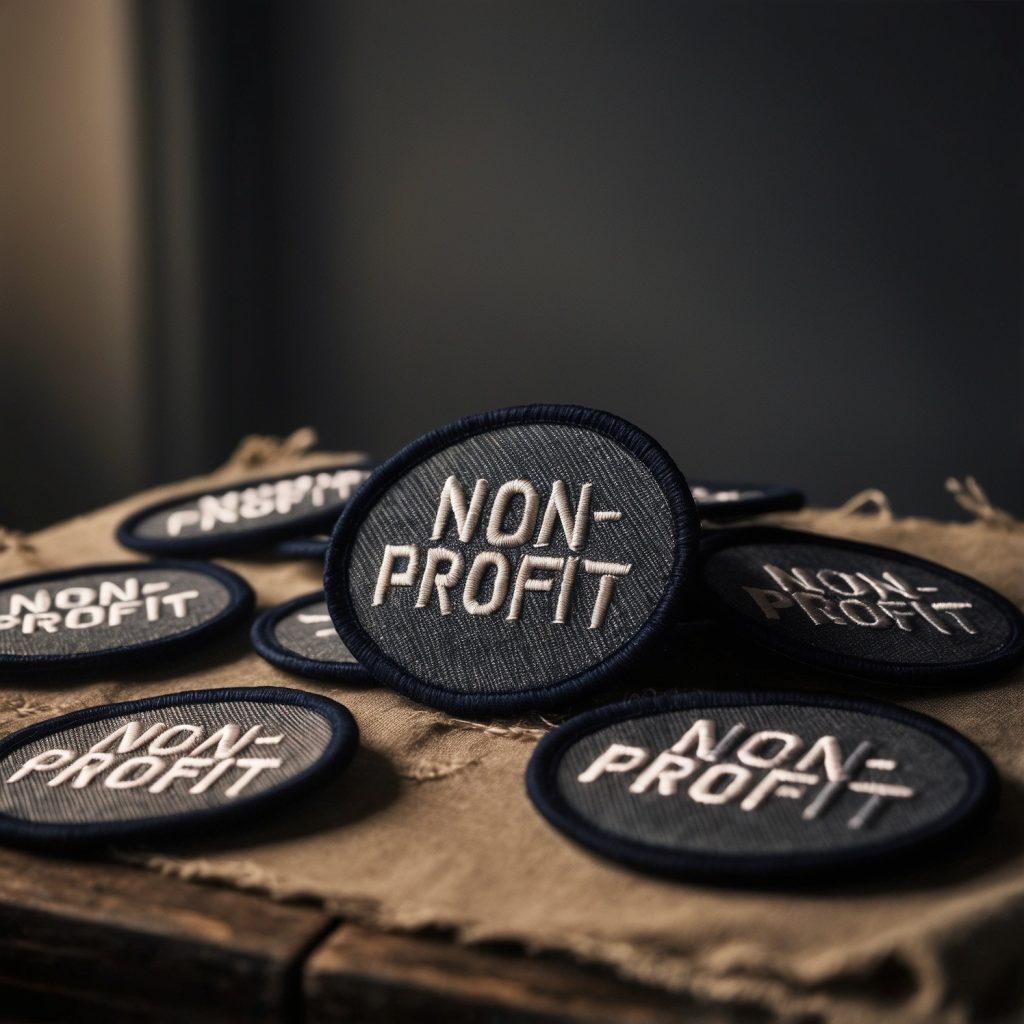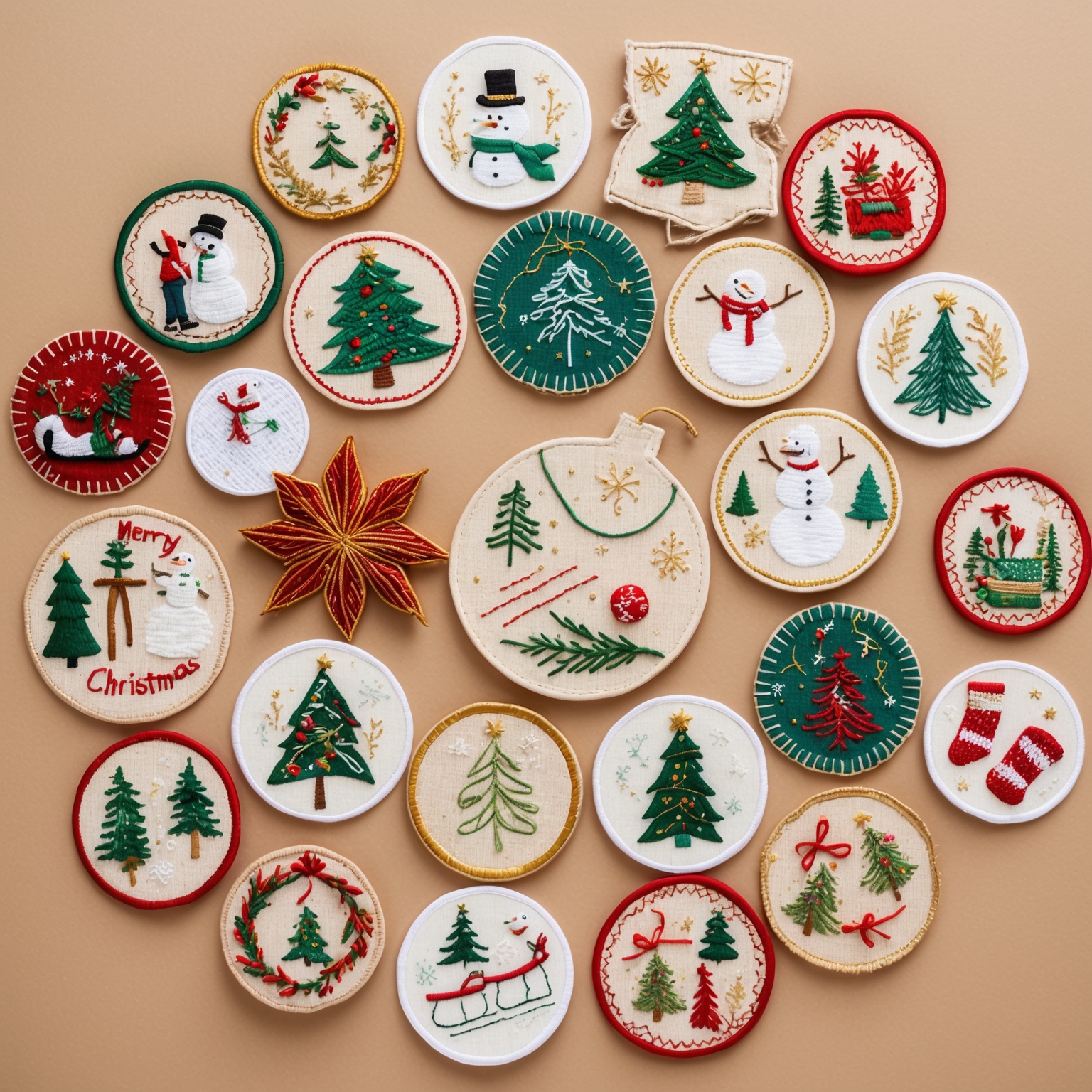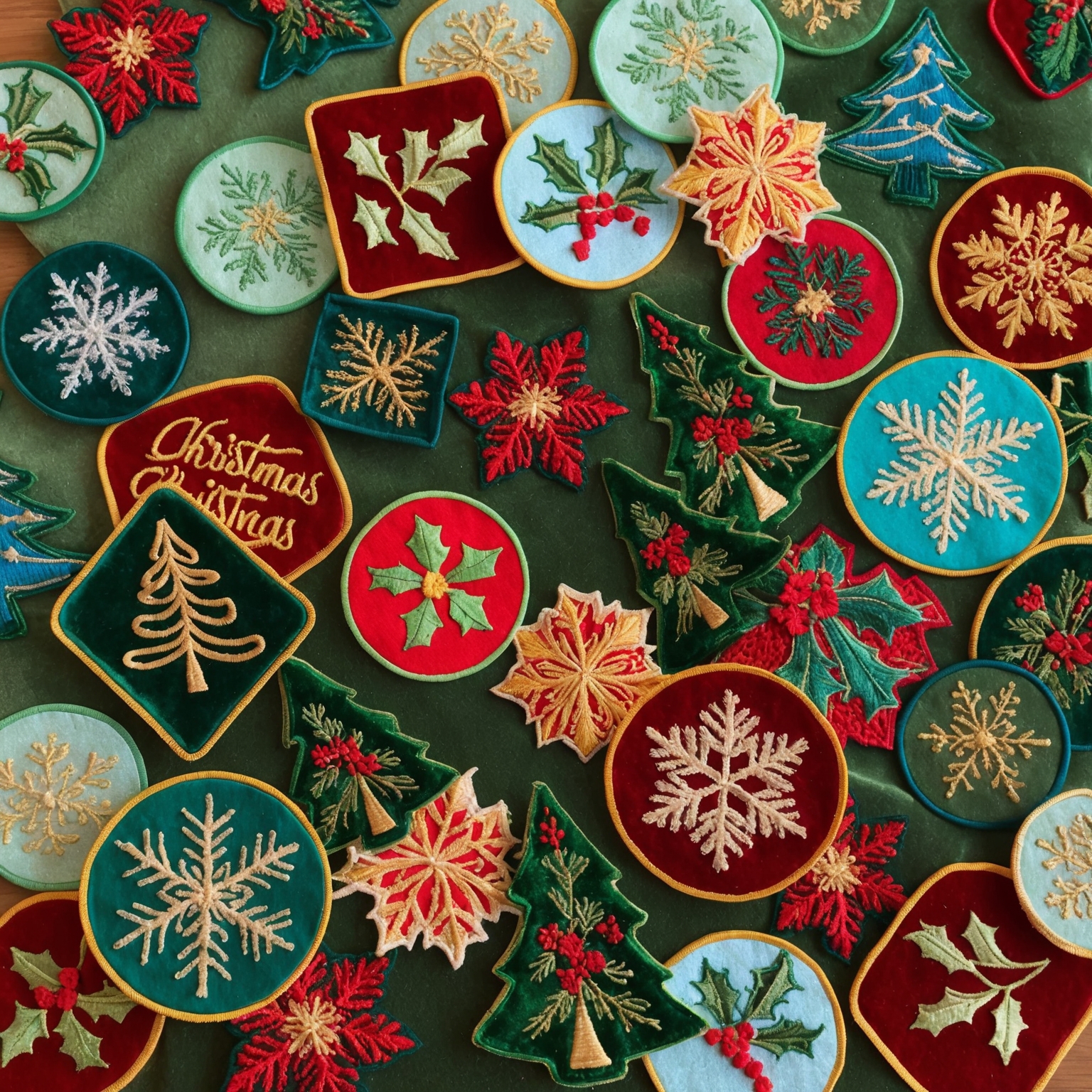In the world of non-profits, raising funds and awareness are crucial to the success and longevity of any cause. Organizations rely on a variety of fundraising methods, from galas and donation drives to digital campaigns and product sales. However, one often overlooked, yet highly effective, tool for amplifying fundraising efforts is the creation and use of non-profit patches. These small, embroidered pieces of fabric can have a huge impact when it comes to connecting with donors, promoting a cause, and generating revenue.
Non-profit patches serve as both a symbol of support and a means to spread a message. They are tangible, easy to produce, and offer a creative way for organizations to engage with their audience. By selling or giving away patches, non-profits can create a lasting connection with their supporters, build brand recognition, and provide a unique way for people to show their commitment to a cause.
In this article, we’ll explore how non-profits can leverage non-profit patches to amplify their fundraising efforts. From designing meaningful patches to incorporating them into fundraising strategies, we’ll cover everything you need to know to make the most of this powerful tool.
Why Non-Profit Patches Are Effective for Fundraising
Before we dive into the specific strategies for designing and using non-profit patches, it’s important to understand why they work so well for fundraising. Patches, as simple as they may seem, offer several unique benefits that make them an excellent addition to any fundraising campaign.
1. Tangible and Collectible Items
Unlike digital donations or generic merchandise, patches are tangible items that supporters can hold, wear, and display. This physical aspect makes them more memorable and meaningful. When someone receives or purchases a patch, they are not only making a contribution to the cause, but they are also receiving something in return that they can keep and treasure.
Additionally, patches can be highly collectible. Many people enjoy collecting patches from various organizations, events, or causes. When non-profits create limited edition patches, donors are more likely to feel a sense of urgency and exclusivity, increasing the likelihood of making a purchase.
2. Low Cost, High Impact
Producing patches is a relatively low-cost endeavor, especially when compared to other forms of merchandise or promotional materials. Once the initial design is finalized, patches can be produced in bulk at a low cost per unit, making them an affordable option for non-profits with limited budgets.
Despite their low cost, patches can have a high impact. They are small and portable, making them easy for supporters to carry or wear. This means that every time a supporter wears their patch, they are promoting the non-profit’s cause to others. Over time, this creates a ripple effect, as more people see the patch and learn about the organization.
3. Personal Connection to a Cause
When a supporter receives a patch, they are not just purchasing a product—they are making a personal connection to a cause. The patch symbolizes their support and commitment to the organization’s mission. For many people, wearing a patch serves as a badge of honor, a way to show the world that they stand behind a specific cause or movement.
This personal connection makes patches more valuable to donors. Rather than being a simple transaction, purchasing or receiving a patch becomes an emotional experience that strengthens the bond between the supporter and the non-profit.
4. Versatile and Customizable
One of the greatest strengths of non-profit patches is their versatility. Patches can be designed in a variety of shapes, sizes, and colors, allowing non-profits to create unique, custom pieces that reflect their brand and mission. Whether it’s a simple logo patch or an elaborate design that tells a story, the possibilities are endless.
Additionally, patches can be used in multiple ways. They can be sewn onto clothing, hats, bags, or displayed as part of a collection. This flexibility allows supporters to choose how they want to display their patch, making it a more personal and customizable item.
Step 1: Designing Meaningful Non-Profit Patches
The first step in leveraging non-profit patches for fundraising is designing a patch that resonates with your supporters and effectively communicates your message. The design process is crucial, as the patch needs to be visually appealing while also reflecting the values and mission of your organization.
1. Define the Purpose of the Patch
Before diving into the design process, it’s essential to define the purpose of the patch. What is its main goal? Is it to raise awareness, commemorate a specific event, or simply provide a way for donors to show their support? Having a clear purpose will guide the design and ensure that the final product aligns with the organization’s objectives.
Some possible purposes for a non-profit patch include:
- Awareness: A patch designed to raise awareness for a cause, such as environmental conservation, social justice, or health issues.
- Fundraising: A patch created specifically to raise funds for a particular campaign or project.
- Recognition: A patch awarded to donors, volunteers, or participants as a token of appreciation for their support or involvement.
Once the purpose is defined, the design process can begin with a clear vision in mind.
2. Incorporate the Organization’s Branding
It’s important that the patch aligns with the non-profit’s overall branding. This means incorporating the organization’s logo, colors, and any relevant symbols or imagery that represent the cause. Consistency in branding helps create a stronger connection between the patch and the organization, making it more recognizable and memorable.
- Logo: If the organization has an established logo, consider making it the focal point of the patch design. A well-designed logo can stand alone as a powerful symbol of the non-profit’s mission.
- Color Scheme: Stick to the organization’s existing color palette to maintain brand consistency. Using familiar colors makes the patch instantly recognizable as part of the non-profit’s visual identity.
- Tagline or Slogan: If the non-profit has a tagline or slogan, incorporating it into the patch design can help reinforce the organization’s message and values.
3. Create a Simple Yet Powerful Design
When it comes to patch design, simplicity is often key. While it’s tempting to include a lot of details, it’s important to remember that patches are small, and intricate designs can be difficult to reproduce in embroidery. A simple, bold design will be more effective and easier to read from a distance.
Some tips for creating a simple yet powerful design include:
- Focus on One Main Element: Whether it’s the logo, a symbol, or a piece of text, choose one main element to be the focal point of the design. This helps keep the patch visually clean and easy to understand.
- Limit the Color Palette: Stick to a limited number of colors—usually no more than three or four. This keeps the design cohesive and ensures that the colors don’t overwhelm the overall look of the patch.
- Use Bold Lines and Shapes: Bold lines and shapes translate well into embroidery and make the design stand out. Avoid using fine details or small text, as they can get lost in the stitching process.
4. Incorporate Symbols or Imagery
If appropriate, consider incorporating symbols or imagery that are meaningful to the non-profit’s cause. For example:
- A non-profit focused on animal welfare might include a paw print or animal silhouette in the design.
- An environmental organization could use symbols like trees, leaves, or the Earth to represent their mission.
- A charity focused on health and wellness might incorporate a heart, stethoscope, or other health-related imagery.
These symbols can help reinforce the organization’s mission and create a deeper emotional connection between the patch and its supporters.
Step 2: Producing and Distributing Non-Profit Patches
Once the design is finalized, the next step is to produce and distribute the non-profit patches. This involves choosing the right materials, determining the quantity, and developing a strategy for getting the patches into the hands of supporters.
1. Choosing the Right Materials
When it comes to producing patches, the quality of the materials is important. High-quality patches are more likely to be cherished and displayed by supporters, while low-quality patches may end up being discarded. Some key material considerations include:
- Embroidery vs. Printed Patches: Embroidered patches are the most traditional option and offer a classic, textured look. However, if the design is highly detailed, printed patches may be a better option, as they allow for more intricate designs and a wider range of colors.
- Fabric Choice: The fabric used for the patch should be durable and able to withstand regular wear. Common fabrics include twill, felt, and cotton, each offering different textures and finishes.
- Backing Options: The backing of the patch determines how it will be attached to clothing or accessories. Options include:
- Iron-on Backing: This allows supporters to easily attach the patch to clothing using an iron.
- Sew-on Backing: This is the traditional method of attaching patches and is often more durable.
- Velcro Backing: For patches that need to be removable or interchangeable, Velcro is a convenient option.
2. Determining the Quantity
One of the benefits of producing patches is that they can be ordered in bulk at a relatively low cost. However, it’s important to carefully consider the quantity needed for the campaign. Ordering too few patches may limit the fundraising potential, while ordering too many can lead to excess inventory.
To determine the right quantity, consider the following factors:
- Expected Demand: How many supporters are likely to purchase or receive the patch? This will depend on the size of the non-profit’s audience and the level of engagement in previous campaigns.
- Budget: Patches are a low-cost item, but it’s still important to stay within budget. Factor in production costs, shipping, and any other expenses associated with distributing the patches.
- Exclusivity: If the goal is to create a limited-edition patch, the quantity should reflect that exclusivity. A smaller quantity can increase demand and make the patch feel more special to supporters.
3. Distributing the Patches
There are several ways to distribute custom non-profit patches, depending on the goals of the campaign and the target audience. Some distribution methods include:
- Selling Patches Online: Non-profits can sell patches directly through their website or online store. This allows supporters from all over the world to purchase patches and contribute to the cause. For maximum impact, consider bundling the patches with other merchandise, such as t-shirts, tote bags, or stickers.
- Distributing Patches at Events: If the non-profit hosts or participates in events, patches can be sold or given away as part of the event. This is a great way to engage with supporters in person and build a sense of community.
- Offering Patches as a Thank-You Gift: Many non-profits offer thank-you gifts to donors who contribute a certain amount. Patches can be used as a small token of appreciation, especially for lower-tier donations.
- Creating a Subscription Model: For ongoing fundraising efforts, non-profits can offer patches as part of a subscription model. Supporters who sign up for monthly or annual donations could receive a new patch each month or quarter as a way to keep them engaged with the cause.
Step 3: Incorporating Non-Profit Patches Into Fundraising Strategies
Once the patches are produced and ready to go, the next step is to incorporate them into the non-profit’s broader fundraising strategy. By using patches as part of a larger campaign, non-profits can amplify their impact and engage supporters in meaningful ways.
1. Patches as Part of a Crowdfunding Campaign
Crowdfunding has become an increasingly popular way for non-profits to raise funds, and patches can be a valuable addition to these campaigns. Offering patches as a reward for different donation levels can incentivize supporters to contribute more, while also providing them with a tangible token of appreciation.
For example:
- Low-Tier Donations: Supporters who contribute a small amount, such as $10 or $20, could receive a basic patch as a thank-you.
- Mid-Tier Donations: Donors who contribute at a higher level, such as $50 or $100, could receive a more exclusive patch with additional design elements or special packaging.
- High-Tier Donations: For major donors, limited-edition patches could be offered as part of a larger package, along with other exclusive rewards.
By offering patches at different donation levels, non-profits can encourage larger contributions while also providing supporters with something valuable in return.
2. Patches as a Part of Peer-to-Peer Fundraising
Peer-to-peer fundraising is another effective way for non-profits to raise money and engage their supporters. In this model, supporters create their own fundraising pages and solicit donations from friends, family, and colleagues. Patches can be used as incentives for fundraisers to reach their goals.
For example:
- Fundraising Goals: Set fundraising goals for peer-to-peer participants and offer patches as rewards for reaching specific milestones. For example, fundraisers who raise $100 could receive a special patch as a thank-you.
- Team Patches: For group fundraisers, create team-specific patches that participants can wear to show their involvement in the campaign. This can help foster a sense of camaraderie and competition among teams.
Patches are a fun and creative way to motivate peer-to-peer fundraisers and keep them engaged throughout the campaign.
3. Patches as Part of Social Media Campaigns
Social media is a powerful tool for spreading awareness and engaging with supporters. Non-profits can leverage social media to promote their patches and encourage supporters to share photos of themselves wearing or displaying their patches.
For example:
- Hashtag Campaigns: Create a unique hashtag for the patch campaign and encourage supporters to use it when sharing photos of their patches on social media. This helps spread the word and creates a sense of community among supporters.
- Photo Contests: Host a photo contest where supporters can submit pictures of their patches for a chance to win a prize. This is a fun way to increase engagement and promote the patches to a wider audience.
By incorporating patches into social media campaigns, non-profits can amplify their reach and attract new supporters.
Amplifying Fundraising Efforts with Non-Profit Patches
Non-profit patches are more than just decorative pieces of fabric—they are powerful tools for amplifying fundraising efforts, building brand awareness, and creating lasting connections with supporters. By designing meaningful patches, producing them at a low cost, and incorporating them into fundraising strategies, non-profits can significantly increase their impact.
Whether used as part of a crowdfunding campaign, peer-to-peer fundraising, or social media promotion, patches offer a unique and effective way for non-profits to engage with their audience. They provide supporters with a tangible reminder of their contribution to the cause while also serving as a badge of honor that can be worn and displayed with pride.
For non-profits looking to amplify their fundraising efforts, non-profit patches offer a simple yet powerful solution—one stitch at a time. If you are interested in purchasing high-quality custom patches, feel free to call us at 866-903-4875 or fill out one of our FREE quotes here.





